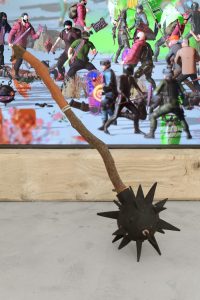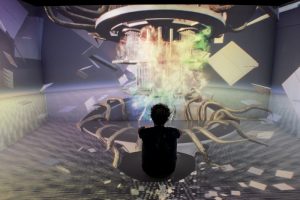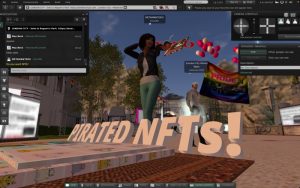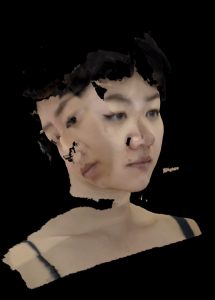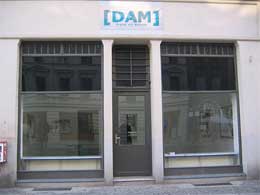 A couple of weeks ago i was gallery hopping with Reto Wettach in and around Auguststrasse. Among the art spaces we visited was [DAM], a gallery dedicated to digital art. On the walls were some really nice prints and animations by Holger Lippmann.
A couple of weeks ago i was gallery hopping with Reto Wettach in and around Auguststrasse. Among the art spaces we visited was [DAM], a gallery dedicated to digital art. On the walls were some really nice prints and animations by Holger Lippmann.
The pieces (which the artist calls “computed aided visual art works”) were exploring various sequences of explosion. We see them every day on TV but does it mean that we have become used to them?
Reto and i stepped out of the gallery and wondered whether a space that focuses on digital art was viable. Does it follow the same economical model as any other gallery? Does it have a market? A future? [DAM] is a bit isolated in the art gallery landscape (at least in Europe as New York, for example, has Bitforms and the Bryce Wolkowitz Gallery) so how does it work? I then decided to contact Wolf Lieser, the gallery owner and curator, and asked him if he’d find some time to answer my questions. I’ll never thank him enough for his enthusiasm, the way he supports and promotes digital artists and for reminding me that the discipline is already some 40 years old. Here’s an overview of our conversation:
Lieser started working on the concept back in 1998. The first step was to set up an online museum of digital art. The aim is to build up a resource for the history and practice of digital fine art, going back to its origins in 1956. There are biographies of the pioneers, essays on the disciplines, a bibliography and a list of some fascinating interviews.
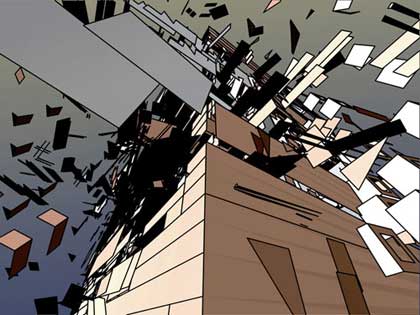 Holger Lippmann – a work from Meta Refresh
Holger Lippmann – a work from Meta Refresh
A few years ago, Lieser had two art galleries, one in Frankfurt and the other one in London. Both cities proved to be fantastic places to make money selling art work but not the digital kind. Either because the art scene there was too conservative or because rents were way too high. Lieser looked around and figured out that the best place to physically ground his project was Berlin. The German public is generally more willing to get into new movements but what makes a real difference is that the city attracts collectors from all over the world. They come for the edginess of the capital, knowing that new tendencies often emerge in Berlin… at reasonable prices.
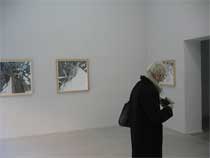 Of course none of the above means that selling digital art is an easy task. Most people in the general art world do not have much idea about digital art, a lot has to be explained about the impact of computer in our culture and the way that the medium is changing the whole art world.
Of course none of the above means that selling digital art is an easy task. Most people in the general art world do not have much idea about digital art, a lot has to be explained about the impact of computer in our culture and the way that the medium is changing the whole art world.
Unsurprisingly younger generations are more ready to engage with digital art. They are familiar with its aesthetics and perceive the amount of work involved in the creation of a 3D scenery for example.
The curator had a nice anecdote about people coming up to him at a Miami art fair. They looked genuinely interested in what they believed was either photography or painting but as soon as Lieser explained that it was in fact a work made using a computer, they felt “cheated” and withdrew.
The works exhibited at the gallery (mostly screen-based: animations, software art, projections, etc.) have to answer to a series of qualities: their authors -whether they are pioneers or new comers- should demonstrate a real mastering of the technique and an aesthetic point of view, use the medium in an innovative way and the medium itself ought to be kept in the background, forgotten. What matters is the fine art quality of the pieces not the technology itself.
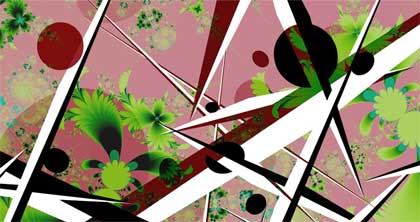 Holger Lippmann – run into flowers, 2004
Holger Lippmann – run into flowers, 2004
Lieser sees [DAM] as a long-term project. He had to build everything from scratch, every profit he makes is invested in the next exhibition and the support of artists and he foresees that there might be 5 years of hard work ahead before the value of digital fine art is more broadly recognized.
In order to help gaining a broader understanding and acceptance of digital media, Lieser has launched the d.velop digital art award. Initiated in 2005, the [ddaa] honours significant life-time achievements in digital art with a prize of 20,000 euros. Included in the award is also a retrospective exhibition at Kunsthalle Bremen and a catalogue.
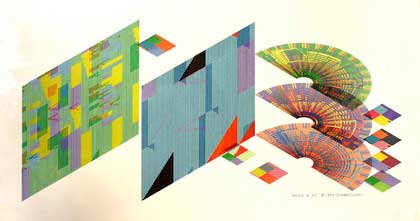 Mark Wilson, Skew H36
Mark Wilson, Skew H36
The current exhibition, The Algorists Plottersketches from 1971 to 2006, features pieces by Jean-Pierre Hébert, Roman Verostko, Mark Wilson, Manfred Mohr, and Hans Dehlinger.
On view through May 19, 2007. Until April 14, visits are made by appointment due the works involved in the re-designing of the gallery space.
The [DAM] gallery is located on Tucholskystr. 37, Mitte, Berlin. Images courtesy of the gallery.

